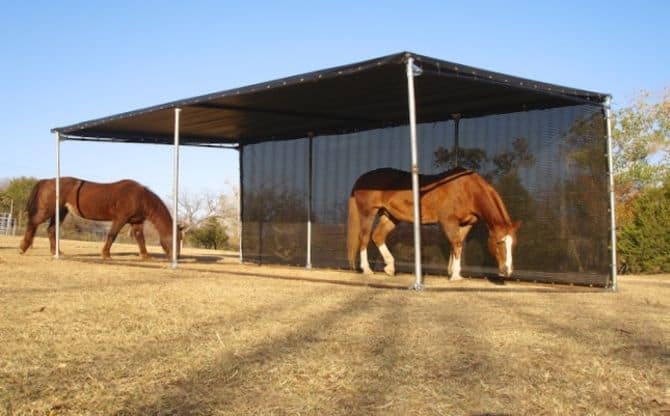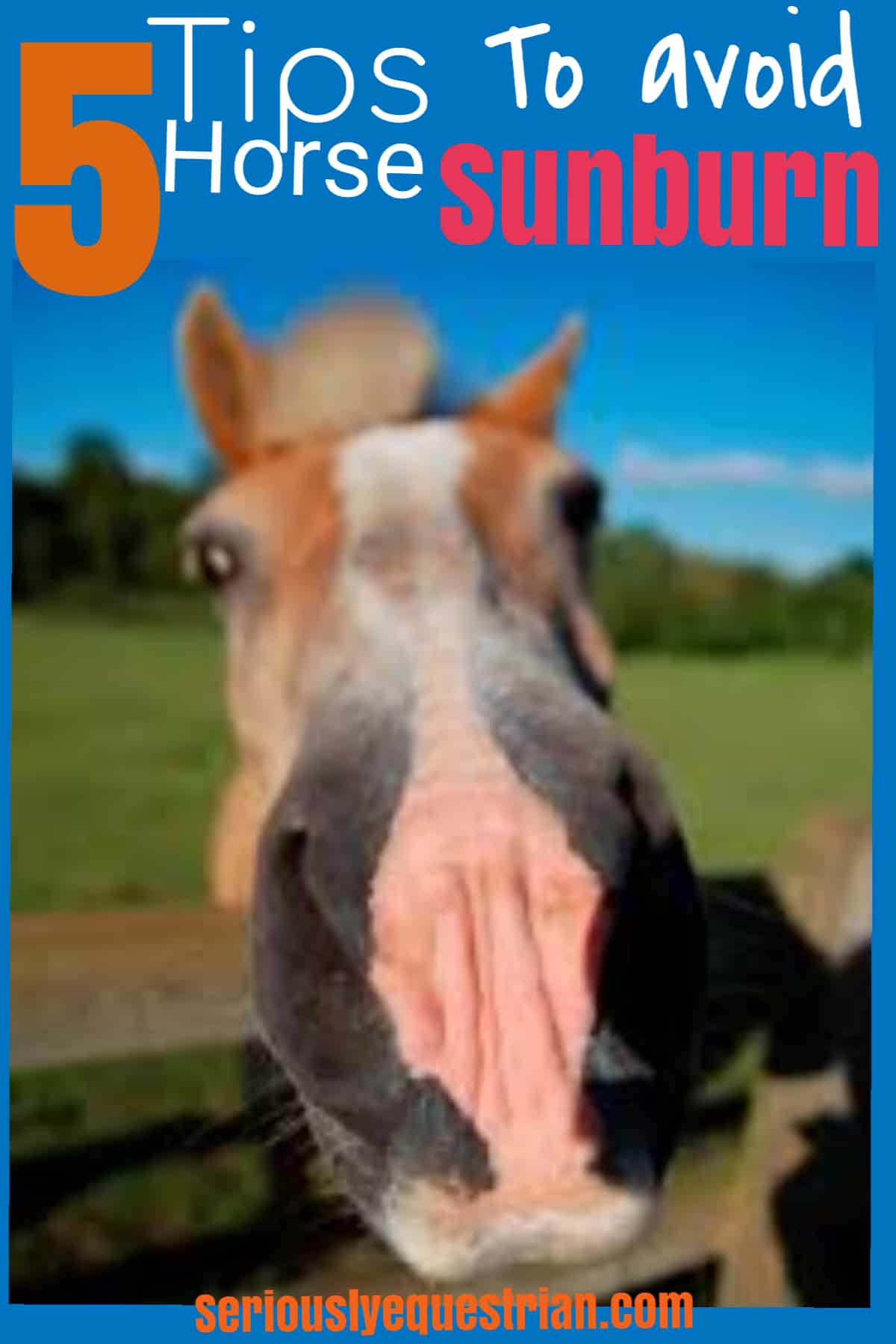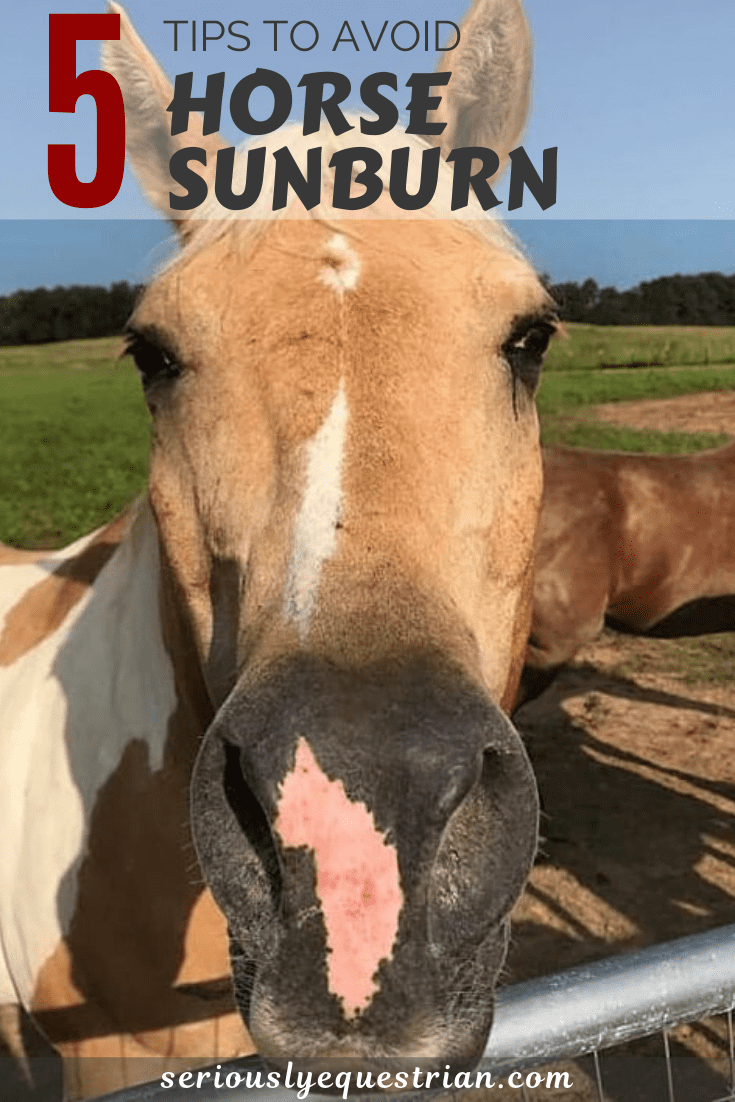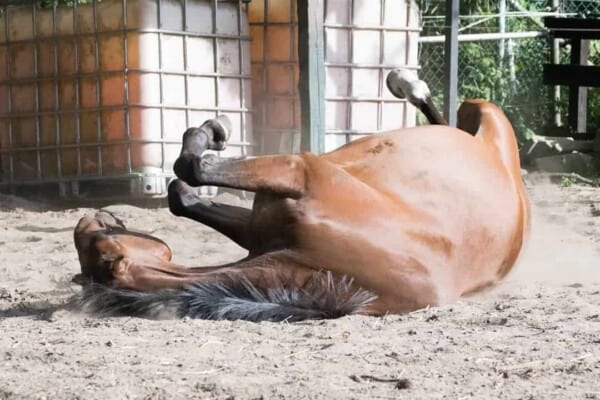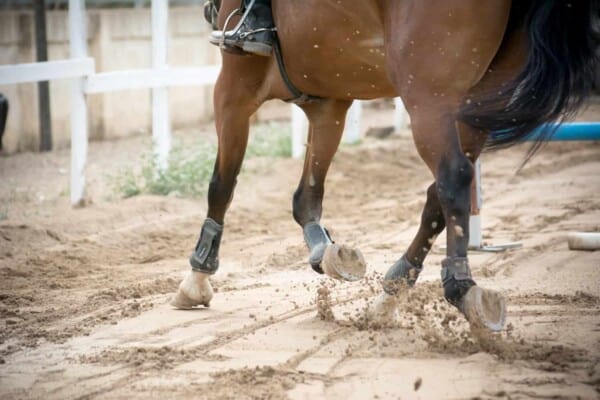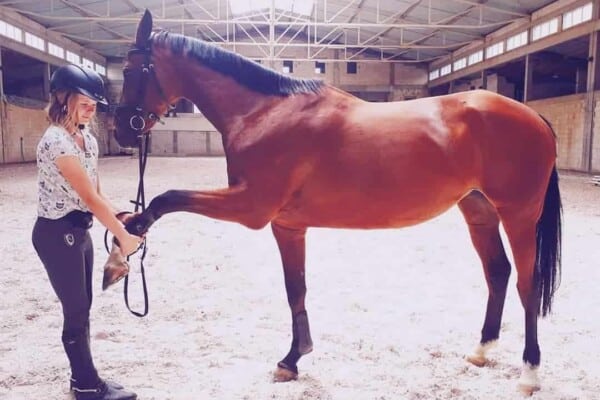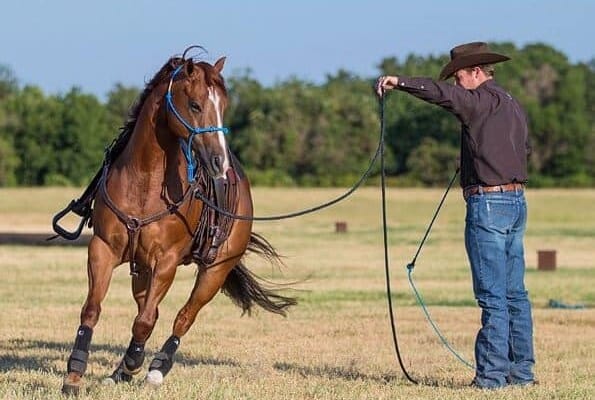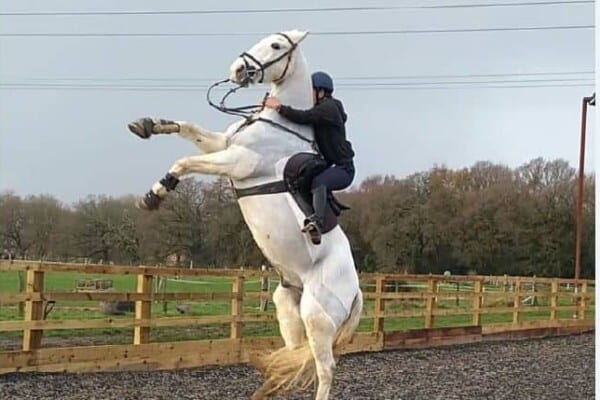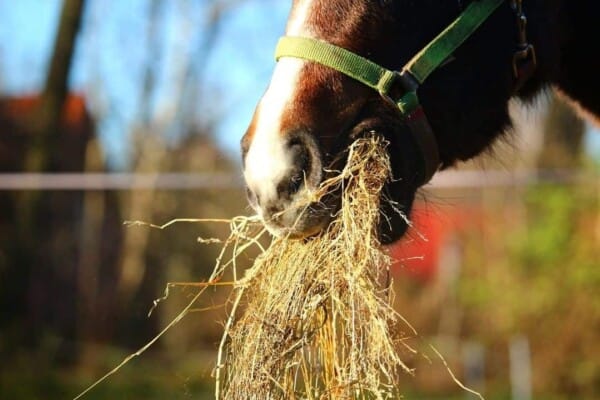Sometimes we forget that Sunburn can affect our animals too. Just like humans, horses can suffer from sunburn and it can be very sore if left untreated. All equine breeds are susceptible to horse sunburn and it can occur throughout the year.
There are some treatment options for sunburn but it is advisable that owners should do everything possible to avoid their horse getting burned in the first place.
They are more likely to get it on the non-pigmented pink areas of their skin such as their nose, eyes, and hoofs. Horses with white markings or a thin coat are more prone to sunburn and require extra care during sunny weather.
Horse Sunburn Symptoms
Just like with humans, horse sunburn can be very painful. It may not be immediately obvious when looking at the horse. However if the horse is burned they are likely to be sore and there are a number of symptoms that may be on display. The horse may only experience one or two of these symptoms but could still be in considerable discomfort.
The most common effects of horse sunburn include:
- Head shyness: Horses typically experience sunburn around the muzzle and head area. This can be quite painful for them and can lead to a reluctance to wear halter or bridle. If your horse becomes head shy you should check for sunburn first before putting on a bridle or other tack.
- Skin lesions & Blisters
- Peeling skin
- Redness
- Patches of depigmented skin
- Puffy eyes and inflammation
Horse Photosensitization
Photosensitization is a light-induced dermatitis caused by a heightened sensitivity of the skin to sunlight. Photosensitization occurs when sunlight triggers a chemical reaction in the blood of the horse.
Primary photosensitization occurs due to the ingestion of foods that contain photodynamic agents, such as St John’s Wort or clover. Secondary photosensitization is a more common type of photosensitivity and occurs due to liver or bile duct damage. It is primarily a condition of sheep, cattle and horses but other species may also be susceptible.
Horses that suffer from either type of photosensitization should be extremely limited in the amount of time that they spend grazing in the sun.
How to protect against horse sunburn
1. Know the risk to your horse
This is the most important factor in order to protect your horse from sunburn. Knowing the level of risk to your horse includes being aware of the areas of your horse that are susceptible to burning and knowing how long and the amount of sun that could be harmful to your horse.
For example if you own a skinned horses with a thin coat you should be aware that your horse requires extra protection than other horses in the field. Likewise if they have been burned previously and have shown any of the symptoms above, then you should take extra care. Be sure to provide extra water in the shaded area during times of extreme sunshine and heat.
2. Ensuring that field has shaded area
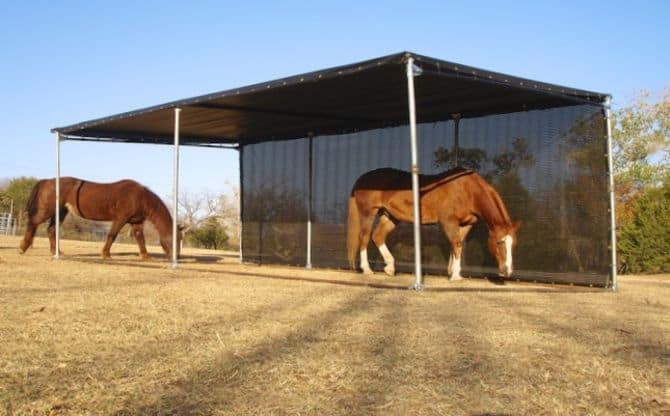 This one may be a bit obvious but it is the best way to ensure that a horse will not get sunburned. The shaded area can be in in the form of a built shelter or even just a tree – as long as it provides sufficient shade. There should be adequate cover for all the horses in the field.
This one may be a bit obvious but it is the best way to ensure that a horse will not get sunburned. The shaded area can be in in the form of a built shelter or even just a tree – as long as it provides sufficient shade. There should be adequate cover for all the horses in the field.
It is also important to ensure that shade is provided throughout the day as angle of the sun changes during the day. Horses will automatically use the shaded areas during periods of strong sun.
3. Turn them out a dusk /night
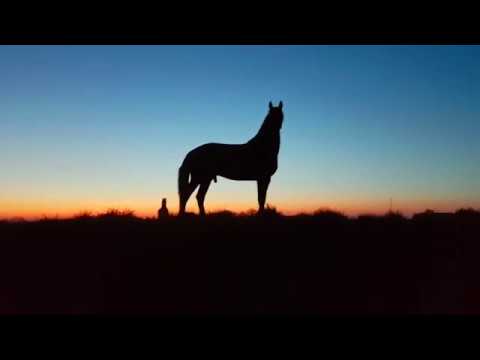 The highest risk of sun exposure is usually between the hours of 10 a.m. and 4 p.m in the summertime. When possible, turn your horse out outside of these hours. If the sun is still particularly strong at other times of the day, maybe consider turning them out at night or dusk. If turning out a dusk be mindful of the increased risk of insect bites.
The highest risk of sun exposure is usually between the hours of 10 a.m. and 4 p.m in the summertime. When possible, turn your horse out outside of these hours. If the sun is still particularly strong at other times of the day, maybe consider turning them out at night or dusk. If turning out a dusk be mindful of the increased risk of insect bites.
Many horse owners report that horses are significantly calmer at dusk so if the horse is prone to other field injuries this may be one to definitely try.
4. Use protective clothing
 Delicate skin around the eyes and muzzle is the most prone to burning. These areas are not pigmented and do not have the same protection as the rest of the body. In order to protect these areas you can use protective clothing such as a fly mask. Some fly masks come with extended nose cover which will protect the horses lips and eyes.
Delicate skin around the eyes and muzzle is the most prone to burning. These areas are not pigmented and do not have the same protection as the rest of the body. In order to protect these areas you can use protective clothing such as a fly mask. Some fly masks come with extended nose cover which will protect the horses lips and eyes.
The great thing about fly covers is that it can be doubly effective as it protects from the sun while also keeping the pesky flies from irritating the horse. There are other options for masks, hoods, wraps and garments that can provide additional protection from the sun if necessary.
5. Use Sunscreen
 Use sunscreen to protect the unpigmented areas of your horse’s skin. There are some special horse sunscreen products on the market but most people prefer to use a normal human sunscreen.
Use sunscreen to protect the unpigmented areas of your horse’s skin. There are some special horse sunscreen products on the market but most people prefer to use a normal human sunscreen.
Try to use a sunscreen with a high SPF factor such as a kids sunscreen. If you want complete protection you could use a zinc oxide cream.
If using sunscreen on your horse it is important that you reapply it regularly during the day. It is also important to use a water resistant sunscreen as horses continuously sweat during the day which will cause the cream to come off. Even if using waterproof cream be sure to regularly reapply sunscreen throughout the day.

